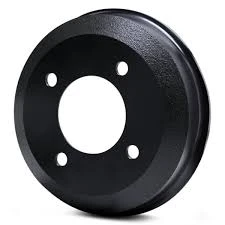
-
 Afrikaans
Afrikaans -
 Albanian
Albanian -
 Amharic
Amharic -
 Arabic
Arabic -
 Armenian
Armenian -
 Azerbaijani
Azerbaijani -
 Basque
Basque -
 Belarusian
Belarusian -
 Bengali
Bengali -
 Bosnian
Bosnian -
 Bulgarian
Bulgarian -
 Catalan
Catalan -
 Cebuano
Cebuano -
 Corsican
Corsican -
 Croatian
Croatian -
 Czech
Czech -
 Danish
Danish -
 Dutch
Dutch -
 English
English -
 Esperanto
Esperanto -
 Estonian
Estonian -
 Finnish
Finnish -
 French
French -
 Frisian
Frisian -
 Galician
Galician -
 Georgian
Georgian -
 German
German -
 Greek
Greek -
 Gujarati
Gujarati -
 Haitian Creole
Haitian Creole -
 hausa
hausa -
 hawaiian
hawaiian -
 Hebrew
Hebrew -
 Hindi
Hindi -
 Miao
Miao -
 Hungarian
Hungarian -
 Icelandic
Icelandic -
 igbo
igbo -
 Indonesian
Indonesian -
 irish
irish -
 Italian
Italian -
 Japanese
Japanese -
 Javanese
Javanese -
 Kannada
Kannada -
 kazakh
kazakh -
 Khmer
Khmer -
 Rwandese
Rwandese -
 Korean
Korean -
 Kurdish
Kurdish -
 Kyrgyz
Kyrgyz -
 Lao
Lao -
 Latin
Latin -
 Latvian
Latvian -
 Lithuanian
Lithuanian -
 Luxembourgish
Luxembourgish -
 Macedonian
Macedonian -
 Malgashi
Malgashi -
 Malay
Malay -
 Malayalam
Malayalam -
 Maltese
Maltese -
 Maori
Maori -
 Marathi
Marathi -
 Mongolian
Mongolian -
 Myanmar
Myanmar -
 Nepali
Nepali -
 Norwegian
Norwegian -
 Norwegian
Norwegian -
 Occitan
Occitan -
 Pashto
Pashto -
 Persian
Persian -
 Polish
Polish -
 Portuguese
Portuguese -
 Punjabi
Punjabi -
 Romanian
Romanian -
 Russian
Russian -
 Samoan
Samoan -
 Scottish Gaelic
Scottish Gaelic -
 Serbian
Serbian -
 Sesotho
Sesotho -
 Shona
Shona -
 Sindhi
Sindhi -
 Sinhala
Sinhala -
 Slovak
Slovak -
 Slovenian
Slovenian -
 Somali
Somali -
 Spanish
Spanish -
 Sundanese
Sundanese -
 Swahili
Swahili -
 Swedish
Swedish -
 Tagalog
Tagalog -
 Tajik
Tajik -
 Tamil
Tamil -
 Tatar
Tatar -
 Telugu
Telugu -
 Thai
Thai -
 Turkish
Turkish -
 Turkmen
Turkmen -
 Ukrainian
Ukrainian -
 Urdu
Urdu -
 Uighur
Uighur -
 Uzbek
Uzbek -
 Vietnamese
Vietnamese -
 Welsh
Welsh -
 Bantu
Bantu -
 Yiddish
Yiddish -
 Yoruba
Yoruba -
 Zulu
Zulu
resurface drum brakes cost
The Cost of Resurfacing Drum Brakes What You Need to Know
When it comes to vehicle maintenance, one of the most critical components that often goes unnoticed is the braking system. Among the various types of brakes, drum brakes play an essential role in ensuring the safety and performance of your vehicle. Over time, these components can wear down, requiring resurfacing or replacement. Understanding the cost and factors involved in resurfacing drum brakes can help you make informed decisions about vehicle maintenance.
What Are Drum Brakes?
Drum brakes are a type of braking system commonly found on older cars and, in some cases, on the rear wheels of newer models. They operate using a drum that rotates with the wheel, and brake shoes that press against the inner surface of the drum to create friction and halt the vehicle. The efficiency of drum brakes can diminish over time due to wear, heat, and environmental factors.
Why Resurface Drum Brakes?
Resurfacing drum brakes involves machining the inner surface of the drum to restore its smoothness and eliminate any grooves or imperfections caused by wear and tear. This process is often preferred over complete replacement as it can be more cost-effective. Resurfacing allows for better contact with the brake shoes, ensuring optimal braking performance and extending the lifespan of the braking components.
Factors Affecting the Cost
The cost of resurfacing drum brakes can vary based on several factors
1. Labor Costs Depending on the auto repair shop's location and reputation, labor costs can range significantly. Urban areas tend to have higher labor rates compared to rural regions.
resurface drum brakes cost

2. Condition of the Drums If the drums are heavily worn or damaged, more extensive repairs may be necessary, leading to higher costs. If the drums are beyond recovery, replacement might be the only option.
3. Type of Vehicle The make and model of your vehicle can also influence costs. Some vehicles may require specialized parts or procedures, which can add to the overall expense.
4. Additional Services During inspections, mechanics may discover other issues that require attention, such as worn-out brake shoes or wheel cylinders. While this may increase costs, addressing these problems early can prevent more significant issues down the line.
5. Warranty and Quality Opting for high-quality parts and services, though potentially more expensive, may be worth the investment as they often come with warranties and are likely to perform better.
Average Cost Estimates
On average, the cost to resurface drum brakes typically ranges from $100 to $150 per axle. This price usually includes removal, resurfacing, and reinstallation of the drums. However, if additional repairs are necessary or if you have a luxury or high-performance vehicle, costs can escalate to $300 or more. Always get a detailed estimate from your mechanic before proceeding with any maintenance work.
Conclusion
Resurfacing drum brakes is a vital aspect of vehicle maintenance that should not be overlooked. While the average costs may seem moderate, understanding the factors that influence these costs can help you make informed decisions about your vehicle's braking system. Regular inspections and preventative maintenance can help catch issues early, saving you money in the long run. Always consult a trusted mechanic to assess your brakes and provide tailored advice. Prioritizing your braking system maintenance not only ensures your safety but also enhances your driving experience, making it well worth the investment.
-
What Are Drum BrakesNewsJul.07,2025
-
Understanding Brake Drum MaterialNewsJul.07,2025
-
Semi-Trailer Brake Drum: A Key Component for Extreme Loads and Long-Distance TransportNewsJul.07,2025
-
Drum Brake Pads for SaleNewsJul.07,2025
-
Brake Drums for SaleNewsJul.07,2025
-
Brake Drum ManufacturerNewsJul.07,2025
-
Aluminum Brake Drums: The Future of High-Performance CarsNewsJul.07,2025
